#GreatDepression
Rare Rides Icons: The History of Imperial, More Than Just a Car (Part XIX)
We return to our Imperial series again today, and the third installment on the all-new personal luxury coupe Lee Iacocca launched in 1981 to resurrect the historical Imperial name. Unlike every other Imperial to date, the new one was available only in two-door coupe guise. The new car had the dual mission of bringing luxury car credibility back to Chrysler, and grabbing some high margin luxury coupe sales from GM and in particular, Lincoln and the Continental Mark VI. We’ve covered the exterior and the underpinnings, so today we slide into the interior, which is most definitely not covered in Rich Corinthian Leather.
Rare Rides Icons: The History of Stutz, Stop and Go Fast (Part V)
We pick up our Stutz coverage again today, in the mid-late Twenties. The company saw its financial situation worsen around the middle of the decade, just as it launched the new Vertical Eight series of cars. More expensive than ever before and more powerful, the new Stutz luxury motorcars weren’t without fault. Though superbly built, they had engineering issues with their hydraulic four-wheel braking system that the company couldn’t seem to sort out.
The brake issues damaged the company’s reputation but didn’t ruin it. And Stutz’s high-performance cars continued in their racing tradition with a second-place finish at LeMans. But Stutz was still losing money and needed to invest in new businesses and technologies to stay afloat. Let’s talk about delivery trucks and faux leather finishes.
Rare Rides Icons: The History of Imperial, More Than Just a Car (Part XVIII)
In our most recent installment of our long-running Imperial coverage, the Eighties dawned with a resurrection of the Imperial name and the debut of an exciting new personal luxury coupe. Chrysler’s new chairman Lee Iacocca was determined to recreate the runaway success he’d had at Ford with the Lincoln Continental Mark III. But that meant a simultaneous ask that luxury coupe buyers ignore the very recent financial troubles that plagued the Detroit automaker. And while the exterior of the new Imperial coupe was all bustleback and new angles, its platform and mechanicals were not quite as exciting. Let’s talk about Mirada, Cordoba, and the reliability benefits of electronic fuel injection.
Rare Rides Icons: The History of Stutz, Stop and Go Fast (Part IV)
Stutz Motor Cars was subject to multiple successive changes in both fortune and direction early in its existence. Founded in 1911 based on racing success at the inaugural Indianapolis 500, by the middle of the decade Stutz had its IPO on the New York Stock Exchange. While the company’s sales increased, by the end of the decade it was without its founder and embroiled in a stock cornering scandal. Though it was delisted from the NYSE circa 1921, Stutz kept on selling the luxury cars for which it had become known. We pick up in 1926, as Stutz hit a sales high but was on the precipice of a big tumble.
Rare Rides Icons: The History of Imperial, More Than Just a Car (Part XVII)
In our last Imperial entry, we found the brand’s run came to an end. In production since 1926 and an independent brand since 1955, the Imperial fizzled out to nothing after 1975. Chrysler closed its luxury Imperial division, and the once proud two- and four-door Imperials were stripped of some standard features and rebranded into the Brougham trim of the New Yorker. The Imperial name had come a long way from its beginnings as a super luxurious coach built car for the wealthy, and ended up as a slightly nicer New Yorker with more formal front and rear clips. But 1975 was not the end of the Imperial’s story, as a particular Chrysler CEO had big Imperial aspirations. To get to that point for Imperial, let’s talk about Ford.
Rare Rides Icons: The History of Imperial, More Than Just a Car (Part XVI)
We return to the Imperial story once more today, at a worst-ever moment. The year is 1974, and the future is bleak for the large prestige car. The economy is down, fuel prices are up due to a recent oil crisis, and the market’s trend is toward front-drive vehicles and sedans of a smaller size. What was Chrysler to do with its flagship Imperial in that sort of environment? Kill it off, that’s what.
Rare Rides Icons: The History of Imperial, More Than Just a Car (Part XV)
We return to the Imperial’s saga once again today, at a very low point for the brand. Though the Fuselage Look of 1969 had propped up Imperial’s sales and generated consumer interest, sales were in decline after the ’69s debut. Chrysler put less and less money into its flagship, as parts sharing increased while options and trims did the opposite. There was a second version of the Fuselage Look for 1972 that showed as longer, lower, and heavier than ever before. And though the new metal buoyed sales slightly, the U.S. car market as a whole saw record sales in 1972 and 1973. 1973 was the last such record year for America, and it coincided with the last Fuselage Imperial. Chrysler had a decision to make about its flagship brand.
Rare Rides Icons: The History of Imperial, More Than Just a Car (Part XIV)
In our last installment of the Imperial saga, we worked through the earliest years of Chrysler’s Fuselage Look era. The Imperial wore its hefty new styling well, even though it shared more parts and even body panels with Chrysler’s lesser New Yorker. Although the new looks were a sales hit in 1969, customers who wanted a Fuselage Imperial bought one immediately. By 1971 things were much grimmer. Imperial was relegated for the first time to a singular trim: LeBaron. A sign of the times, the brand was no longer advertised separately in marketing materials, but alongside Chrysler’s other offerings as “Imperial by Chrysler.” However, for 1972 it was time for a big update, as Chrysler tried to bump up the Imperial’s seriously sagging sales.
Rare Rides Icons: The History of Imperial, More Than Just a Car (Part XIII)
We entered the Fuselage Look era of the Imperial in our last installment, as Chrysler shook off the conservative and upright styling its flagship brand wore prior to 1969. Prices were notably slashed and quality suffered as Imperial shared body panels with its Chrysler siblings, incidents that in previous decades would’ve been out of the question. We pick up in 1970, for the second year of the C-body Fuselage Imperials.
Rare Rides Icons: The History of Imperial, More Than Just a Car (Part XII)
As we make our way into the 12th installment of Rare Rides Icon’s Imperial coverage, the third generation 1967 Imperial became the shortest-lived in the nameplate’s history. After the decade-long reign of the D-body, Imperial switched to the unibody C platform to cut costs, and move on from dated body-on-frame underpinnings. But it was an odd time to introduce a new car, as the C-body was no spring chicken when the Imperial debuted. More importantly, Chrysler was on the cusp of an entirely new styling direction: The Fuselage Look.
Rare Rides Icons: The History of Imperial, More Than Just a Car (Part XI)
We return once more to Imperial today and find ourselves in 1967. The earlier portion of the Sixties was a turbulent time for Imperial, as the D-body soldiered on from 1957 through 1966 model years as the Imperial marque’s second-generation car. In 1967, Imperial’s lead designer Elwood Engel managed Imperial’s transition to a new shared platform. Say hello to C.
Rare Rides Icons: The History of Imperial, More Than Just a Car (Part X)
This 10th installment of our Imperial coverage finds us at a turning point in its styling. Virgil Exner had been fired but was allowed to stay on as a design consultant at Chrysler. Exner’s immediate replacement was Elwood Engel, who’d designed the 1961 Lincoln Continental and then jumped ship when he was not promoted at Ford. Chrysler execs wanted out of Exner’s winged, googly-eyed stylistic cave, and Engel took the aged D-body in a very different direction for 1964.
Rare Rides Icons: The History of Imperial, More Than Just a Car (Part IX)
Today marks the ninth installment in our history of Imperial, as the calendar flips over to 1961. The second generation Imperial is not quite to the middle of its tenure on its own platform, the D-body. Virgil Exner imposed a wild new styling direction on Imperial for 1960 that was both outlandish visually, and heavy-handed in its execution. “More of that,” said Exner for ’61.
Rare Rides Icons: The History of Imperial, More Than Just a Car (Part VIII)
We continue our Rare Rides Icons series on Imperial today. Starting in 1957, Chrysler’s then-separate luxury arm spent more and more time on bold styling, and less on the hand-built quality for which the company’s first cars in 1955 and 1956 were known.
Rare Rides Icons: The History of Imperial, More Than Just a Car (Part VII)
Today’s installment of the Imperial series is our seventh and coincides with the seventh generation Imperial. Officially it was the second-generation car under the new Imperial marque, an independent arm of Chrysler launched in 1955 to compete with the likes of Lincoln and Cadillac. The move to independence brought with it a resurgence of interest in the brand, as the Exner styled ’55 and ’56 Imperials stood out from the rest of Chrysler’s offerings visually, and in terms of quality and luxury. We pick up in 1957 when it was time for another new Imperial.






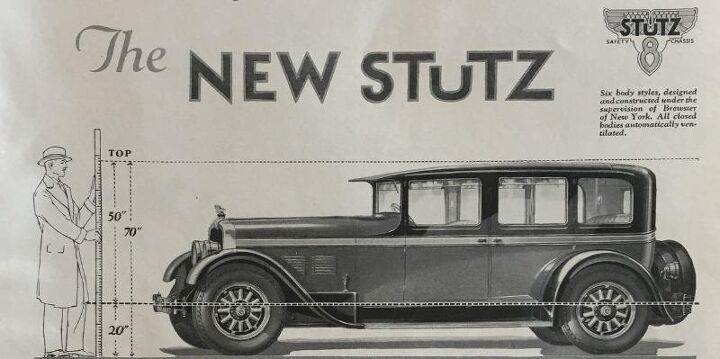


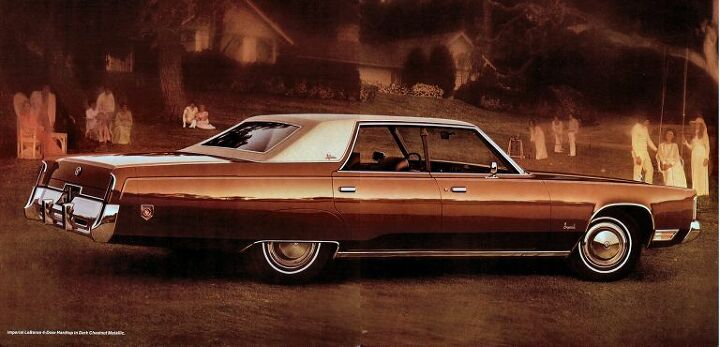
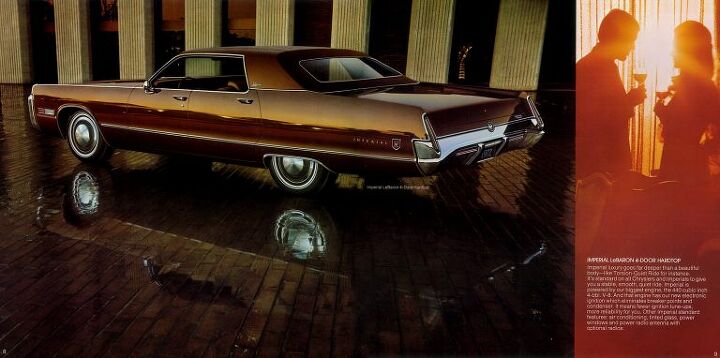
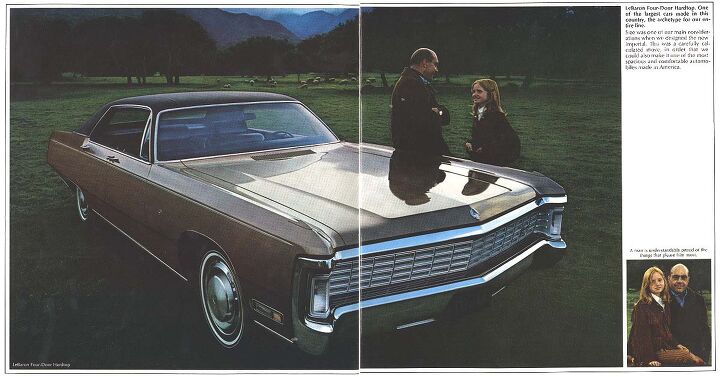


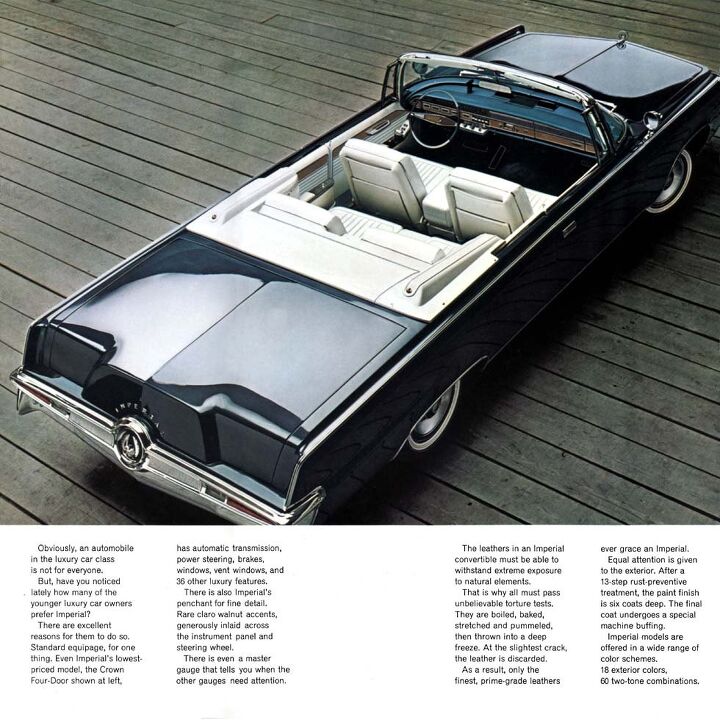















Recent Comments